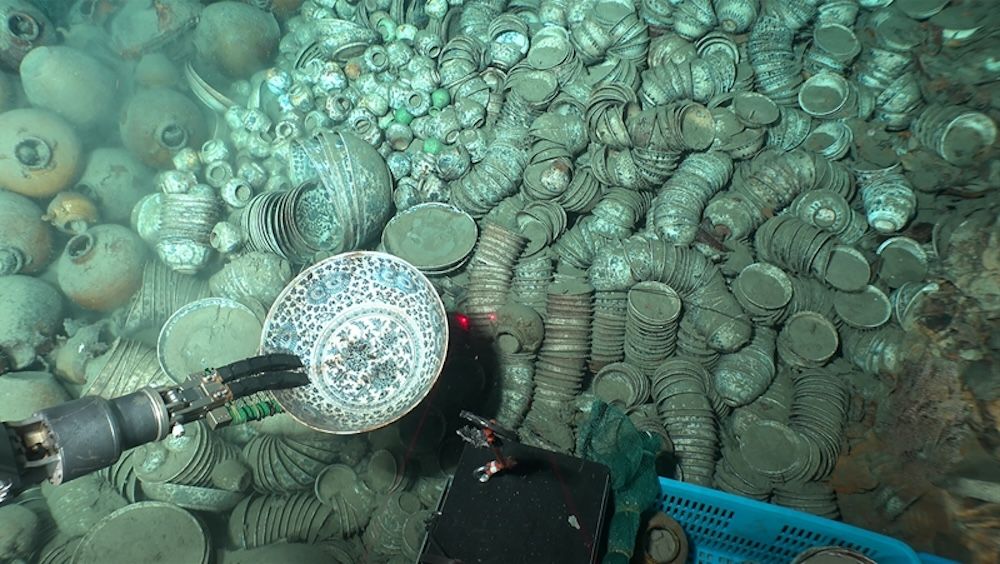These treasures submerged in the South China Sea
Follow us on Google News (click on ☆)

Researchers used a deep-sea submersible to recover hundreds of artifacts, including this porcelain bowl. Credit: NCHA/Handout via Xinhua
In October 2022, initial clues led researchers to an incredible discovery. At approximately 4,900 feet (around 1,500 meters) deep, two shipwrecks were lying in a region bordered by China, Vietnam, and the Philippines. These shipwrecks, dating from the Ming Dynasty (1368-1644), had remained hidden for centuries, less than a mile (around 1.5 km) from the coast of Sanya on Hainan Island.
The technological exploration of these sites was a feat in itself. Researchers utilized the submersible "Shenhai Yongshi" or "Deep Sea Warrior" to map and excavate the wrecks. This technological marvel allowed for meticulous exploration of the seabed, revealing the remarkable state of preservation of the wrecks and the wealth of objects uncovered.
The first shipwreck unveiled an abundance of porcelain and pottery items as well as copper coins. These objects hail from Jingdezhen, the porcelain capital of China. The quality and quantity of the artifacts underscore the significance of this cargo for maritime trade of the time.
The findings from the second shipwreck were equally fascinating. Among the 38 artifacts recovered, researchers found construction wood, porcelain, pottery items, and even deer antlers. These unexpected objects provide a unique glimpse into the commercial and cultural exchanges of that era.
These shipwrecks are precious witnesses to the history of commercial exchanges during the Ming Dynasty. They illustrate the central role of the maritime Silk Road in trade and cultural exchanges between the East and the West. The artifacts reveal not only economic aspects but also the cultural interactions that shaped this period.
The discovery of these shipwrecks opens new perspectives for archaeological research. The next stages of exploration could reveal even more details about maritime trade and international relations of the Ming era. Researchers also hope to uncover the mystery of the shipwrecks' causes, adding an extra dimension to this underwater adventure.